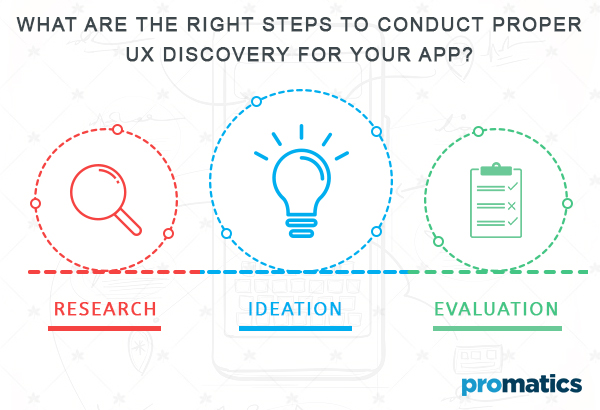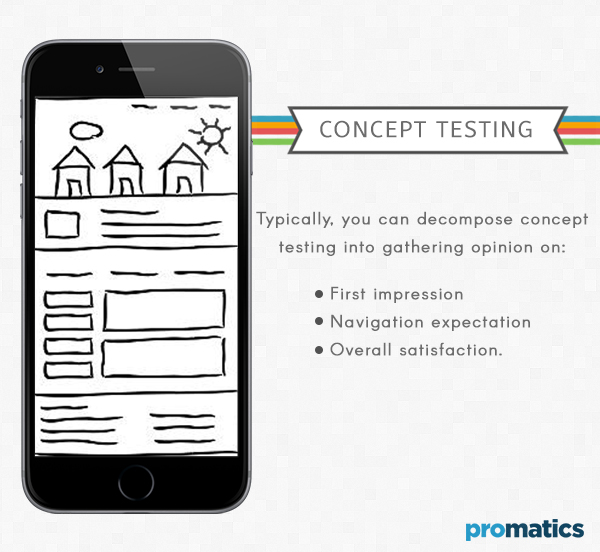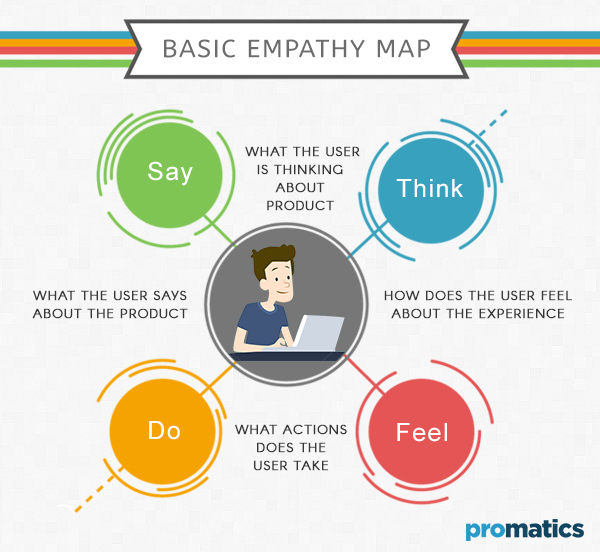What is UX discovery? How to conduct one for your app?
While designing an app for your business, it’s pertinent that you recognize the vital importance of providing a superlative User Experience (UX) with the application that you create. Going by research backed facts, as many as 52 percent users document that a bad mobile experience makes them less likely to engage with the company. A superior experience on the other hand can result in a visit to lead conversion that is higher by as much as 400 percent. These facts suggest that augmenting the UX is a critical element in the success equation of any app.
As a fact, the whole idea behind creating any app is to help the end-user feel at ease with some existing problem. If by design and experience, your app fails to achieve that, it’s going to be no more than another element crowding the App store and will rarely generate any ROI from your investment.
In order to avoid a sub optimal outcome with your app, it is essential that you engage in the systematic process to formulate a proper UX strategy before kick starting with the development process.
As per the image above, it’s the research phase that essentially equals the discovery part. It’s that one step that must not be missed at any cost. This article is about helping you understand the meaning, importance and application of the UX Discovery step.
In its scope, it covers the right time to delve into the process and sheds light on the key steps that you must make it a point follow. Without further ado, let’s understand them.
What Exactly Is UX Discovery?
UX Discovery is the starting step towards formulating a solid strategy and roadmap for building any successful app. Essentially, it refers to that part of the app design and development process where the team behind the scenes gets to learn about the product, the targeted users and the client’s business model.
On gaining clarity on these aspects with proper discovery, they are enabled to make meaningful recommendations on the design and architecture. The evidence gathered in this process is exactly what ensures that the team is on the right track with their work.
Why Is UX Discovery Important?
UX Discovery can easily be called the most important part of the app design process. That’s because strong assets are only built on the strength of the right knowledge.
Often clients or even founders of app based businesses suggest the app designing and developing team to skip this step as they feel it can result in a detour from what they want and often tend to load them with their own cognitive bias.
However, if you’re doing that, it’s everything but wise to discount the expertise of the team and eliminate the part where they can add some real value. Here are some of the key benefits you can achieve by engaging in proper UX discovery –
1.) Properly aligned thought process behind the app design, layout and architecture
2.) Clarity on what exactly is needed to help the target group, resulting in pivotal focus on the most relevant aspects
3.) Uncovering the main challenges and risks that need to be catered to
4.) Having a well documented strategy to outshine the competitors
5.) Streamlining of goals and schedules, with the associated costs
Who Should Engage In UX Discovery & When?
The right time to engage in discovery is prior to starting out with building the app. Discovery applies to all include those building an MVP for an app-based startup, a brand new app for a business or even a revamped version of an existing app.
As a fact, it’s also important for the app development businesses to engage in some discovery before formalizing a quote with their client. That’s because inadequate understanding before starting out, coupled with a fixed and agreed quote can place a strain on the outcome achieved or end up being too optimistic to achieve in the agreed timeline.
What Are The Right Steps To Conduct Proper UX Discovery For Your App?
As such there is no hard equation to follow when engaging in UX discovery. Your idea should be to collect as much business, user and competitor data as possible depending on your objective.
The length of the process too, depends from app to app, your customer’s need and the starting point of the exercise.
If we are to go with suggesting a general framework, the steps are essentially three in number – Research, Ideation & Evaluation. Let’s understand these in detail.
 The Generic Trinity Behind Proper UX Discovery
The Generic Trinity Behind Proper UX Discovery
Step 1 – Research
At this stage, you should try and make as much sense of the data as possible. You can go ahead with competitor analysis, a market study or visiting the analytics and insights to uncover key metrics as to where and when do users most often drop out, which pages attract most traffic and so on. While going through the prevailing information set can be helpful for you, you can also collect some additional primary data. This can be in the form of –
Gathering Information Through Questionnaires
You can use interactive survey tools to gather insightful information to aid your experience design process. By handing out a list of well thought out questions to the end customers or your client (if you’re the developing company), you can gather insights that can help you make meaningful decisions.
The idea behind gathering any of this information should be not just encouraging the app developing team to think about the purpose and value of the app, but also properly visualize the targeted user experience.
Detailing Out Targeted Audience
Users of any app come form a diverse group, each with their own needs, wants and pain points. Hence, you must supplement your research with a thorough understanding of your primary and secondary target audience.
A good way to go about this is by building personas and engaging in journey and empathy mapping.
Journey mapping is about uncovering how the users will end up on your app and walking through each of the steps they will be likely to take.
Empathy maps are about stepping inside their shoes and getting to know them in as much as detail as possible. Knowing this information can really help you work towards build the best possible experience.
Step 2 – Ideation
At this step, you should think hard and try and find new ideas and build further on them. Ideation is all about jotting down new ideas, getting the best to rise on top of the pile and culminating it into an actionable plan. You can break down the ideation part into two broad phases –
Brainstorming
While brainstorming you should try to list down all the ideas you can think of. The task may be designated it to a restricted group but ideally it should involve the entire team.
In order to approach it in an organized way, it’s good if you start with one question at a time and maintain a record of everything. Once everybody has made their contribution, the points can be compiled together and similar ideas clustered in broadly defined groups.
A way to gain efficiency here is to conduct the exercise in silence to help everyone concentrate at their best. You must allow each member to list down his or her idea even if it resembles another’s, for elimination of redundancy can be left for later. If the group members are not physically at the same location, you may use tools like Google Hangouts to conduct the brainstorming session.
Card sorting
As a fact, planning the informational architecture and navigation for any app is all based on assumption, and getting that right is critical to the end experience. However, your end user may not perceive things the same way as you do and card sorting can help you close this gap.
Once you have your bundle of ideas collected, you can go ahead with organizing it in terms of well-defined priorities with proper card sorting. You can deploy the method to prioritize the features that are likely to be most meaningful for your users and the business or organizational goals.
You can rank the features or ideas as important, somewhat important and not important. The process should start with your internal stakeholders. Ideally you should also supplement it with external inputs from those who have no exposure to the app to ensure completeness in your action.
Step 3 – Evaluation
Finally, this is the last step in the discovery process and it can help you ensure that you’ve extracted the right takeaways from the preceding two steps. The idea for you here should be to make sure that you’ reserving the target audience best. You can achieve this by sketching out your concept and testing it.
 Concept Testing With Screen Sketches
Concept Testing With Screen Sketches
Typically, you can decompose concept testing into gathering opinion on–
A.) First impression
B.) Navigation expectation
C.) Overall satisfaction.
Based on your sketch, you can ask individuals about what they’re expecting and if their first impression of the app makes them feel their life can become simpler with it. Then you can remove the sketch after a few seconds, and ask for their key takeaway and what struck them the most. This can help you understand if your messaging is coming out as intended and help you finalize on the concepts.
Your next step should be to get advice from them as to where they feel the CTAs or the buttons should be placed. Your last step here can be about enquiring how satisfied they are feeling in order to confirm that your team is on the right track.
It will help you if you restrict concept testing to one-on-one interactions without too many concepts at a go, to avoid overwhelming the participant taking the test. You may keep this in-house as external stakeholders might not be able to give value advice due to lack of interest, time or experience.
With all these steps in place, the discovery can be regarded as comprehensive and is sure to augment the UX.
Conclusion
Investing in a good user experience is a must in the development process of any mobile app to rake in meaningful results, for it’s the experience that determines the frequency of usage and final conversion.
In order to ensure that the user experience is best possible, UX discovery as a step is indispensable. Even though there is no standard formula or timeline required to conduct it, the key steps revolve around break down into research, ideation and evaluation.
Proper discovery ensures that the app experience aligns with both the intended end user and the business’ goals. It’s safe to say that as a step in the process, discovery can make all the difference in getting the desired result.
Still have your concerns?
Your concerns are legit, and we know how to deal with them. Hook us up for a discussion, no strings attached, and we will show how we can add value to your operations!




